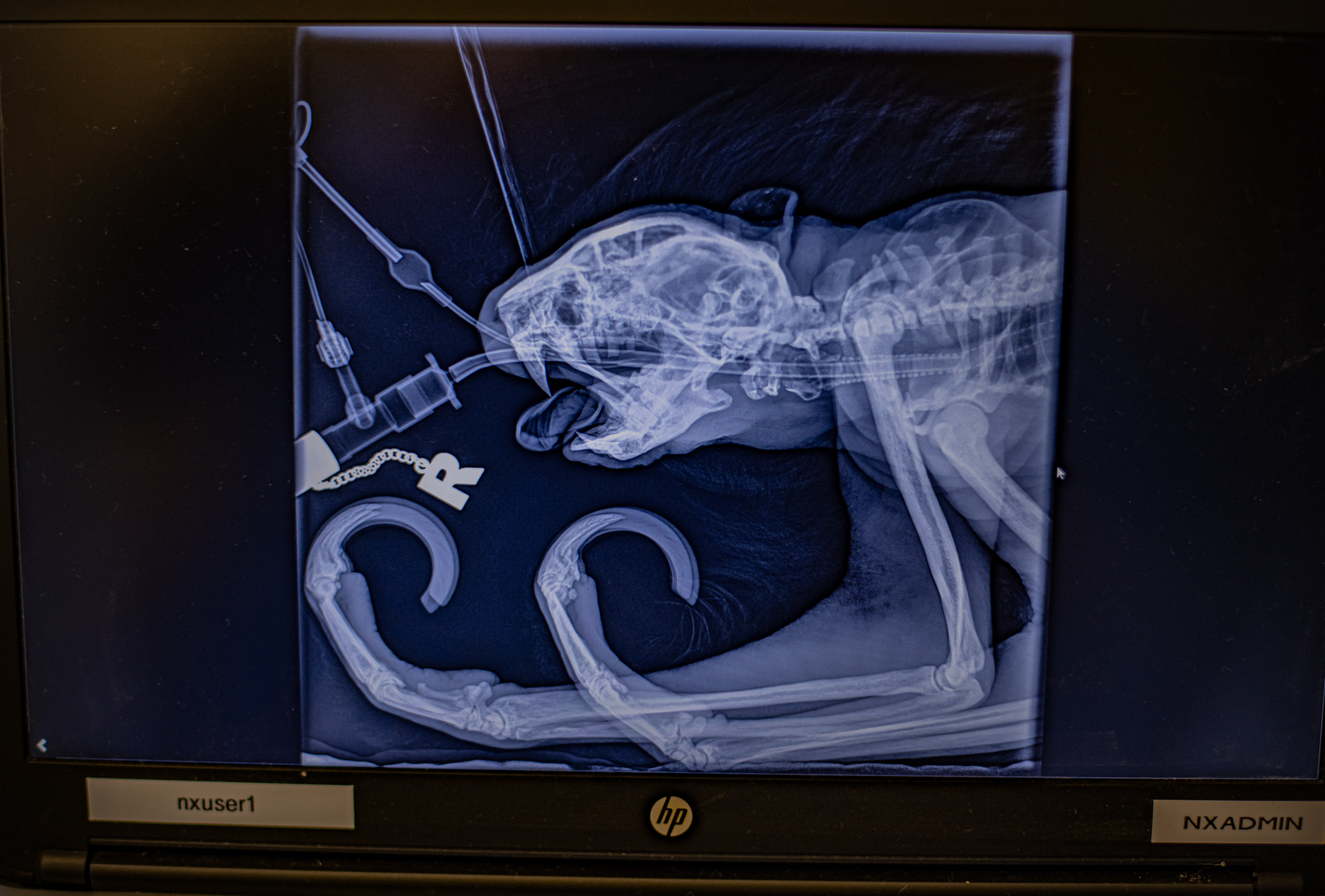Even zoo animals can sometimes benefit from a little trip to the vets. Whether they have a blade of grass stuck up their nose or require a neck brace, zoo vets can work wonders to help all manner of patients from the feathered to the scaled to the furred. Rico the sloth is no different and has received tip-top care on his teeth to get him back to his usual (slow) self in what is thought to be the first surgery of this type for slothkind.
Keepers at Chester Zoo in the UK were quick to notice when 25-year-old Rico, a Linnaeus’s two-toed sloth, developed a swelling on the side of his face. The zoo team performed a CT scan on Rico, which revealed that he had two root abscesses.
“Sloths have very different teeth to humans, which makes dentistry challenging. The large, sharp teeth that were affected in Rico were caniniform teeth, which are highly specialised molars,” said Charlotte Bentley, Veterinary Resident at the zoo, in a statement sent to IFLScience.

X-rays help the team understand if the treatment has worked.
Image Credit: Chester Zoo
By calling in endodontic experts from Newcastle University, Rico underwent a pioneering 3-hour-long surgery to remove the infected tissue that surrounded two of his teeth. The experts removed the bottom of one of the tooth roots and sealed it with a special dental cement. Fortunately, the team was able to keep one of Rico’s teeth, which will help him chow down on a diet of leaves and vegetables in the future.
“Like so many things with sloths, the exact purpose of these specialised sharp teeth is not fully understood. However, they are thought to serve an important role in biting and shearing their food, so we were eager to try to avoid any extractions during the initial operation,” continued Bentley.
“Whilst we couldn’t save both teeth, the great news is that since his procedure, the abscesses have not come back, and his latest X-ray shows his filling is still in place. It’s safe to say that the treatment worked at treating his toothache.”
It’s thought this is the first time this type of surgery has been performed on a sloth, and Fiona Beddis, dentist and Associate Clinical Lecturer at the Newcastle University Department of Restorative Dentistry, was thrilled to take part.
“It’s a great privilege to treat such a rare and beautiful animal. I felt great empathy with Rico as I underwent the same procedure on my front tooth when I was 16 years old, and this in fact inspired me to become a dentist. Rico experienced much less post-operative swelling than I did!” Beddis said.
“Having never carried out this procedure on a sloth, it really was a step into the unknown, so we are all delighted with the successful outcome.”
Persuading a sloth, or any animal, to step into a CT scanner or MRI machine is not easy. Using gentle training techniques can provide real benefits to the animals in cases like this, where they need to be seen by vets or have general health checks. Rico has been trained using target training, whereby if he touches his nose to a ball on top of the end of the target stick, he receives a reward. This helps considerably when getting him into position for X-rays, so he does not have to repeat anaesthetics.
“He goes at his own pace,” said Brittany Williams, a Keeper on the Twilight Team at Chester Zoo, when Rico spent a few minutes yawning and blinking before heading to his health check. “But I don’t mind working at sloth speed.”
In the wild, two-toed sloths are found across the northern part of South America, including in some unexpected places. They are threatened by habitat loss due to deforestation as well as being captured for the illegal pet trade. At Chester Zoo, sloths are part of a conservation program to safeguard these captivating creatures across conservation zoos in Europe.
Source Link: Rico The Two-Toed Sloth Undergoes Pioneering 3-Hour Surgery For Toothache